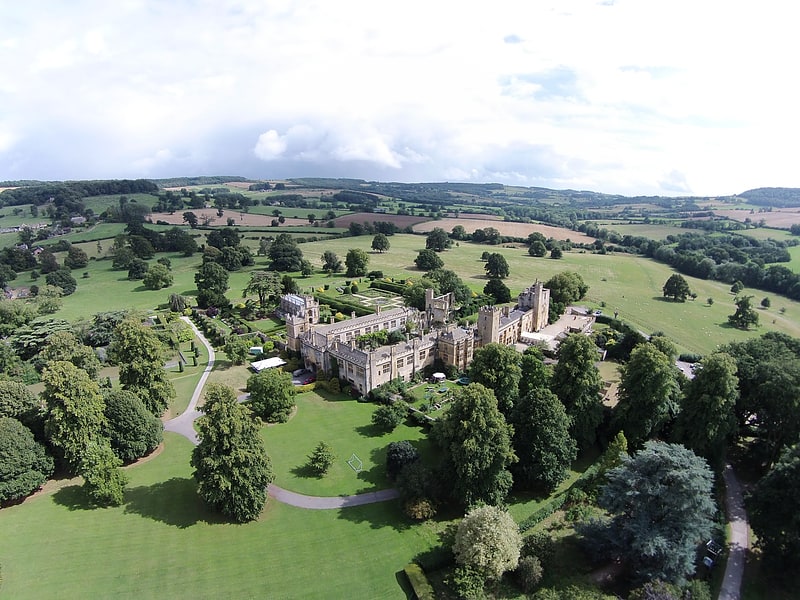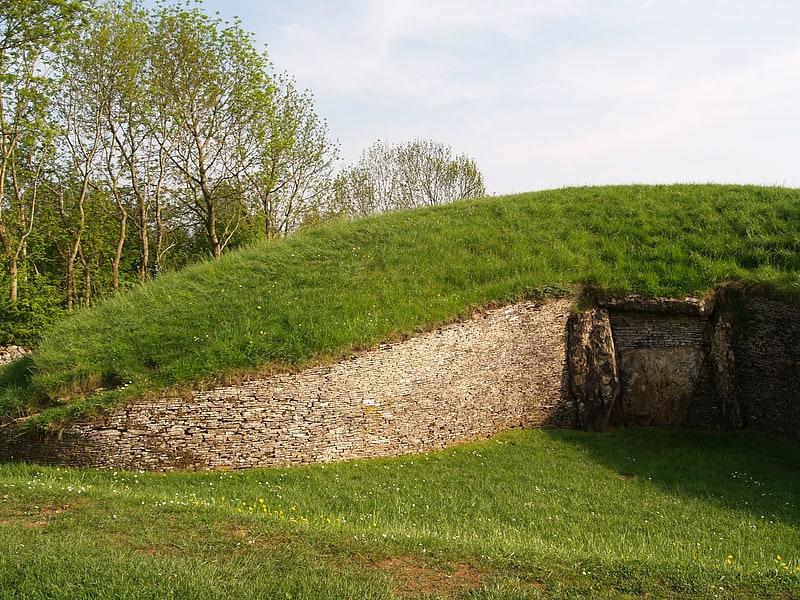Discover 4 hidden attractions, cool sights, and unusual things to do in Winchcombe (United Kingdom). Don't miss out on these must-see attractions: Sudeley Castle, Belas Knap, and Winchcombe Railway Museum. Also, be sure to include Alderton Hill Quarry in your itinerary.
Below, you can find the list of the most amazing places you should visit in Winchcombe (England).
Table of Contents
Sudeley Castle

Fortress with artefacts and famous gardens. Sudeley Castle is a Grade I listed castle in the parish of Sudeley, in the Cotswolds, near to the medieval market town of Winchcombe, Gloucestershire, England. The castle has 10 notable gardens covering some 15 acres within a 1,200-acre estate nestled within the Cotswold hills.
Building of the castle began in 1443 for Ralph Boteler; the Lord High Treasurer of England, on the site of a previous 12th-century fortified manor house. It was later seized by the crown and became the property of King Edward IV and King Richard III, who built its famous banqueting hall.
King Henry VIII and his then wife Anne Boleyn visited the castle in 1535; and it later became the home and final resting place of his sixth wife, Catherine Parr who remarried after the king's death. Parr is buried in the castle's church, making Sudeley the only privately owned castle in the world to have a Queen of England buried in its grounds. Sudeley soon became the home of the Chandos family, and the castle was visited on three occasions by Queen Elizabeth I, who held a three-day party there to celebrate the defeat of the Spanish Armada.
During the First English Civil War the castle was used as a military base, by King Charles I and Prince Rupert, and it was later besieged and slighted by parliament, remaining largely in ruins for the following few centuries until its purchase in 1837 by the Dent family, who restored the castle and turned it into a family home.[1]
Address: Castle St, GL54 5JD Winchcombe
Belas Knap

Historical landmark in England. Belas Knap is a neolithic, chambered long barrow situated on Cleeve Hill, near Cheltenham and Winchcombe, in Gloucestershire, England. It is a scheduled ancient monument in the care of English Heritage but managed by Gloucestershire County Council. "Belas" is possibly derived from the Latin word bellus, 'beautiful', which could describe the hill or its view. "Knap" is derived from the Old English for the top, crest, or summit of a hill.
It is a type of monument known as the Cotswold Severn Cairn, all of which have a similar trapezoid shape, and are found scattered along the River Severn. Belas Knap is described in the English Heritage designation listing statement as an "outstanding example representing a group of long barrows commonly referred to as the Cotswold-Severn group".[2]
Winchcombe Railway Museum

Abbey. Winchcombe Abbey is a now-vanished Benedictine abbey in Winchcombe, Gloucestershire; this abbey was once in the heart of Mercia, an Anglo Saxon kingdom at the time of the Heptarchy in England. The Abbey was founded c. 798 for three hundred Benedictine monks, by King Offa of Mercia or King Coenwulf of Mercia. In its time, it was the burial place of two members of the Mercian ruling class, the aforementioned Coenwulf and his son Cynehelm, later venerated as Saint Kenelm.
The abbey was refounded in 970 after the disruptions of the Danish invasions, and the first abbot of the new establishment was Germanus of Winchester.
The Abbey itself was in the grounds to the east end of the parish church of St Kenelm. Many pilgrims visited St Kenelm's tomb in the early middle ages, and the Abbey thus became very rich. At its heyday, Winchcombe Abbey alone owned 25,300 acres (102 km²) in 13 parishes. Indeed, Snowshill Manor was owned by Winchcombe Abbey from 821 until the Dissolution of the Monasteries. In the early sixteenth century Winchcombe Abbey was known as a centre of learning under Abbot Richard Kidderminster (1488–1527), who was also a renowned preacher and acted as an ambassador for Henry VII. The quality of the stonemasons at Winchcombe was known to be very high, and it was a Winchcombe master mason who built the Divinity School at Oxford.
Winchcombe Abbey was surrendered to the Crown and then demolished in 1539. Some of its stones can still be found in Winchcombe; for example the lintel over the abbey gate now rests over the gate of what was once the George Inn. Fragments of the abbey can still be seen in various places in Winchcombe, notably the Corner Cupboard Inn on the Cheltenham road.
It is believed that Edmund Brydges, 2nd Baron Chandos used the ruins as a quarry during his redevelopment of Sudeley Castle in the 1570s; a collection of abbey stone that was retrieved from the castle gardens are displayed in its dungeons.
A stone cross was erected in the 19th century to mark the centre of the abbey tower. Very little now remains of the Abbey; more remains of its great nearby rival, Hailes Abbey.[3]
Address: 23 Gloucester Street, Winchcombe
Alderton Hill Quarry

Quarry in England. Alderton Hill Quarry is a 0.34-hectare geological Site of Special Scientific Interest in Gloucestershire, notified in 1997. It is a Geological Conservation Review site.[4]